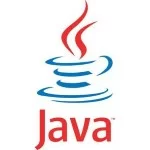GraalVM AOT: Is This Finally the End of JVM Warmup?
The Java Virtual Machine has always been a study in contrasts. On one hand, it delivers remarkable peak performance thanks to decades of JIT compiler optimizations. On the other, every Java developer knows the frustration of waiting through those first few sluggish seconds as the JVM “warms up.” This warmup period, while ultimately rewarding for long-running applications, has become increasingly problematic in our world of serverless functions and microservices.
GraalVM’s Ahead-of-Time compilation changes this equation dramatically. Take a simple REST endpoint as an example:
1 2 3 4 5 6 7 | @Path("/hello")public class GreetingResource { @GET public String hello() { return "Hello from GraalVM!"; }} |
When compiled to native using native-image -jar app.jar, this endpoint starts in milliseconds rather than seconds. The difference becomes even more striking when we look at framework-based applications. A Quarkus service built for GraalVM typically starts in under 0.1 seconds, compared to the 2-3 seconds required for traditional Spring Boot applications on the JVM.
The magic happens through GraalVM’s closed-world analysis. During build time, it performs aggressive static analysis to determine exactly which classes and methods will be needed at runtime. This allows it to create a lean, optimized native executable that doesn’t need the JVM’s interpretation phase. The resulting binary includes just the necessary code, a trimmed-down runtime (Substrate VM), and a compact garbage collector.
However, this approach comes with constraints. Features that rely on runtime flexibility require special configuration. For example, if your code uses reflection:
1 2 | Class<?> clazz = Class.forName("com.example.DynamicClass");Method method = clazz.getMethod("dynamicMethod"); |
You’ll need to provide a reflection configuration file to the native image builder. This is part of GraalVM’s “closed-world” assumption – it needs to know about these dynamic features at build time rather than discovering them at runtime.
The performance characteristics differ in interesting ways. While startup is dramatically faster, long-running applications might show slightly lower peak throughput compared to a well-optimized JVM. This makes GraalVM AOT particularly compelling for certain use cases:
- Serverless functions where cold start time is critical
- Command-line tools that need instant responsiveness
- Containerized microservices where fast startup enables better scaling
Yet traditional JVM deployment still shines for applications that:
- Run continuously for long periods
- Make heavy use of dynamic features
- Require absolute peak throughput
The Java ecosystem is adapting beautifully to this new reality. Modern frameworks now often support both deployment models. For instance, you can develop with Quarkus using standard JVM mode for fast iteration, then build a native image for production deployment.
Here’s how the deployment commands might differ:
1 2 3 4 5 | # Traditional JVMjava -jar myapp.jar# GraalVM Native./myapp |
The difference in startup time becomes immediately apparent when you run these side by side.
As we look to the future, it’s clear that GraalVM AOT isn’t so much killing the JVM warmup as it is providing an alternative for situations where warmup is unacceptable. The Java ecosystem is becoming richer for having both options available, with developers able to choose the right tool for each job. The warmup period isn’t disappearing – it’s just becoming optional, and that might be the most exciting development of all.



